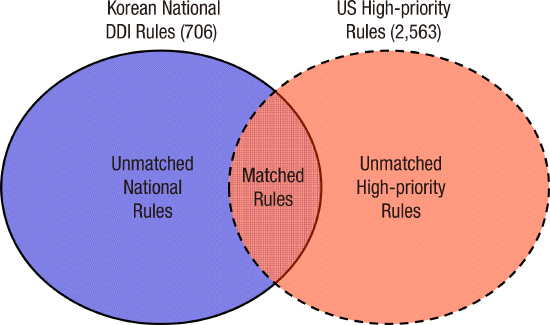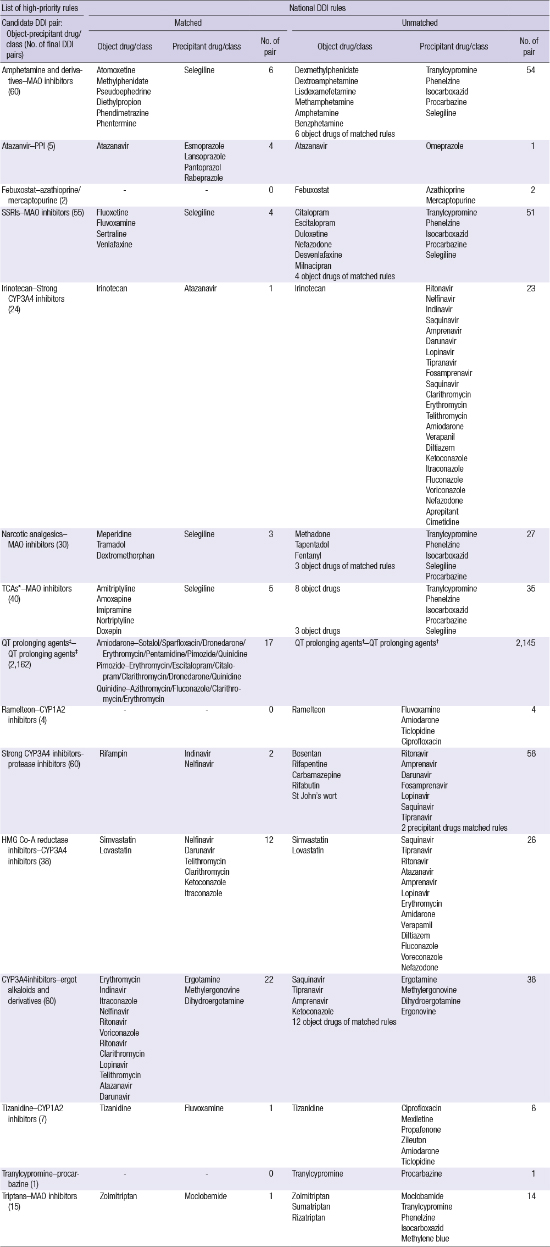1. Choi NK, Park BJ. Strategy for establishing an effective Korean drug utilization review system. J Korean Med Assoc. 2010; 53:1130–1138.
2. Slight SP, Seger DL, Nanji KC, Cho I, Maniam N, Dykes PC, Bates DW. Are we heeding the warning signs? Examining providers’ overrides of computerized drug-drug interaction alerts in primary care. PLoS One. 2013; 8:e85071.
3. Park JY, Park KW. The contraindication of comedication drugs and drug utilization review. J Korean Med Assoc. 2012; 55:484–490.
4. Jeon HL, Park JH, Kim DS, Choi BC. Review of the drug utilization review program of United States 47 States and suggestion of policy. Health Soc Welf Rev. 2014; 34:192–221.
5. Shin HC, Park YT, Lee YT, Jo EC. Healthcare utilization monitoring system in Korea. Healthc Inform Res. 2015; 21:184–190.
6. Phansalkar S, van der Sijs H, Tucker AD, Desai AA, Bell DS, Teich JM, Middleton B, Bates DW. Drug-drug interactions that should be non-interruptive in order to reduce alert fatigue in electronic health records. J Am Med Inform Assoc. 2013; 20:489–493.
7. Cho I, Lee J, Han H, Phansalkar S, Bates DW. Evaluation of a Korean version of a tool for assessing the incorporation of human factors into a medication-related decision support system: the I-MeDeSA. Appl Clin Inform. 2014; 5:571–588.
8. Cho I, Lee JH, Slight SP, Bates DW. International comparison of multi-hospital drug-drug interaction rules based on high and low priorities. In : Paper presented at the Spring Conference of the Korean Society of Medical Informatics(KOSMI); Seoul: The Korean Society of Medical Informatics;2014.
9. Greenberg M, Ridgely MS. Clinical decision support and malpractice risk. JAMA. 2011; 306:90–91.
10. Ahn EK, Cho SY, Shin D, Jang C, Park RW. Differences of reasons for alert overrides on contraindicated co-prescriptions by admitting department. Healthc Inform Res. 2014; 20:280–287.
11. Lee SO, Je NK, Kim DS, Cheun BO, Hwang IO. Tiering ‘drug combinations to avoid’ and ‘drug-age precaution’ DUR alerts by severity level and its application. Yakhak Hoeji. 2015; 59:278–283.
12. Paterno MD, Maviglia SM, Gorman PN, Seger DL, Yoshida E, Seger AC, Bates DW, Gandhi TK. Tiering drug-drug interaction alerts by severity increases compliance rates. J Am Med Inform Assoc. 2009; 16:40–46.
13. Phansalkar S, Desai AA, Bell D, Yoshida E, Doole J, Czochanski M, Middleton B, Bates DW. High-priority drug-drug interactions for use in electronic health records. J Am Med Inform Assoc. 2012; 19:735–743.
14. Bates DW. Clinical decision support and the law: the big picture. St Louis Univ J Health Law Policy. 2011; 5:319–324.
15. van Roon EN, Flikweert S, le Comte M, Langendijk PN, Kwee-Zuiderwijk WJ, Smits P, Brouwers JR. Clinical relevance of drug-drug interactions : a structured assessment procedure. Drug Saf. 2005; 28:1131–1139.
16. Böttiger Y, Laine K, Andersson ML, Korhonen T, Molin B, Ovesjö ML, Tirkkonen T, Rane A, Gustafsson LL, Eiermann B. SFINX-a drug-drug interaction database designed for clinical decision support systems. Eur J Clin Pharmacol. 2009; 65:627–633.
17. Seidling HM, Storch CH, Bertsche T, Senger C, Kaltschmidt J, Walter-Sack I, Haefeli WE. Successful strategy to improve the specificity of electronic statin-drug interaction alerts. Eur J Clin Pharmacol. 2009; 65:1149–1157.
18. Smithburger PL, Kane-Gill SL, Benedict NJ, Falcione BA, Seybert AL. Grading the severity of drug-drug interactions in the intensive care unit: a comparison between clinician assessment and proprietary database severity rankings. Ann Pharmacother. 2010; 44:1718–1724.
19. Smith WD, Hatton RC, Fann AL, Baz MA, Kaplan B. Evaluation of drug interaction software to identify alerts for transplant medications. Ann Pharmacother. 2005; 39:45–50.
20. Helmons PJ, Suijkerbuijk BO, Nannan Panday PV, Kosterink JG. Drug-drug interaction checking assisted by clinical decision support: a return on investment analysis. J Am Med Inform Assoc. 2015; 22:764–772.
21. Jang C, Yoo KB, Kim W, Park MY, Ahn EK, Park RW. New alert override codes for the drug utilization review system derived from outpatient prescription data from a tertiary teaching hospital in Korea. Healthc Inform Res. 2016; 22:39–45.











 PDF
PDF ePub
ePub Citation
Citation Print
Print





 XML Download
XML Download